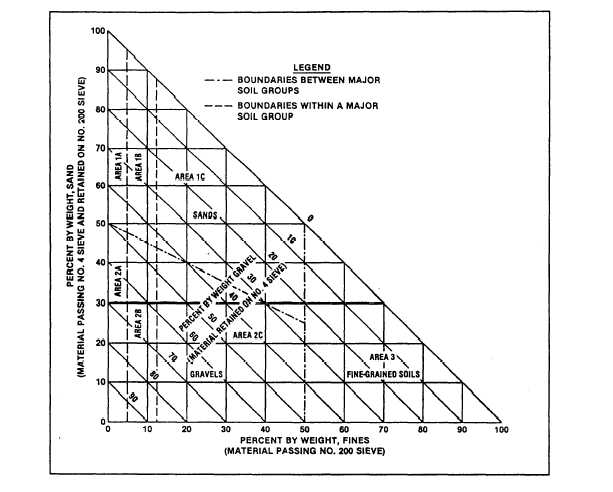Fly ash, when mixed with lime, can be used
effectively to stabilize most coarse- and medium-
grained soils. However, the PI should not be greater than
25. Soils classified by the USCS as SW, SP, SP-SC,
SW-SC, SW-SM, GW, GP, GP-GC, GW-GC, GP-GM,
GW-GM, GC-GM, and SC-SM can be stabilized with
fly ash.
BITUMINOUS
Most bituminous soil stabilization has been
performed with asphalt cement, cutback asphalt, and
asphalt emulsions. Soils that can be stabilized
effictively with bituminous materials usually contain
less than 30 percent passing the No. 200 sieve and have
a PI less then 10. Soils classified by the USCS as SW,
SP, SW-SM, SP-SM, SW-SC, SP-SC, SM, SC, SM-SC,
GW, GP, SW-GM, SP-GM, SW-GC, GP-GC, GM, GC,
and GM-GC can be effectively stabilized with
bituminous materials provided the above-mentioned
gradation and plasticity requirements are met.
Combination stabilization is specifically defined as
lime-cement, lime-asphalt, and lime-cement-fly ash
(LCF) stabilization. Combinations of lime and cement
often are acceptable expedient stabilizers. Lime can be
added to the soil to increase the workability and mixing
characteristics of the soil as well as reduce its plasticity.
Cement can then be mixed into the soil to provide rapid
strength gain. Combinations of lime and asphalt are
often acceptable stabilizers. The lime addition may
prevent stripping at the asphalt-aggregate interface and
increase the stability of the mixture.
SELECTION OF A STABILIZER
In the selection of a stabilizer additive, the factors
that must be considered are the type of soil to be
stabilized, the purpose for which the stabilized layer will
be used, the type of soil quality improvement desired,
the required strength and durability of the stabilized
layer, and the cost and environmental conditions.
The soil gradation triangle in figure 18-1 is based
upon the pulverization characteristics of the soil. When
Figure 18-1.—Soil gradation triangle.
18-3



